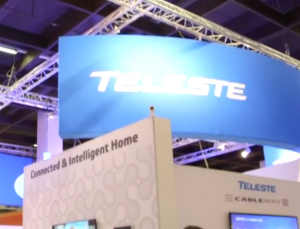
After more than 40 years of operation, DTVE is closing its doors and our website will no longer be updated daily. Thank you for all of your support.
Teleste hit by component shortage crisis as broadband tech demand grows
 Broadband technology provider Teleste saw its operating profit tumble by 83% in the half year to June as component shortages continued to hit its bottom line despite what the company described as strong demand.
Broadband technology provider Teleste saw its operating profit tumble by 83% in the half year to June as component shortages continued to hit its bottom line despite what the company described as strong demand.
“Our operating environment became even more challenging during the second quarter, especially due to the effects of the component crisis,” said CEO Esa Harju.
“Our delivery volumes and particularly the profitability of our operations have been affected by the longer delivery times of materials and components, the logistics problems in Asia, the increased uncertainty in the availability of components, delivery changes requested by customers, and the still-rising prices of components. We have managed to avoid production shutdowns partly through expensive broker purchases and by significantly increasing our buffer stocks. High inflation is also increasing all operating expenses.”
The fall in profit came despite a 7.2% rise in net sales to €38.4 million for the period.
Operating profit fell to €0.2 million on the other hand.
Harju said that investment in broadband networks was “continuing at a good level in Europe”, with new orders continuing to come in. However, he highlighted a delay in the company’s ability to pass increased costs onto customers in the shape of higher prices.
Harju said Teleste did not expect the component supply crisis to revert to anything approaching normality in the near future.
Teleste said that risks facing the company primarily “related to the worsening shortage of components and materials, the war started by Russia in Ukraine, the pandemic situation and shutdowns in China, general geopolitical instability and accelerating inflation”.
Teleste suspended deliveries to Russia and Belarus at the start of Russia’s aggression against Ukraine.
On the upside, Teleste said that demand for broadband upgrades was growing with cable operators investing in DOCSIS 3.1-compliant 1.2GHz upgrades. It said that DOCSIS 3.1 distributed access architecture products were now becoming standard for upgrades by advanced operators.
The company is also confident that cable is investing in DOCSIS 4.0, particularly in the US, with European operators weighing the benefits of full fibre upgrades.
Product development projects for Teleste’s 1.8 GHz DOCSIS 4.0-compliant network products are under way. The deployment of passive products can begin in 2022, with the readiness to start amplifier upgrades to follow thereafter in 2023, the company said.


